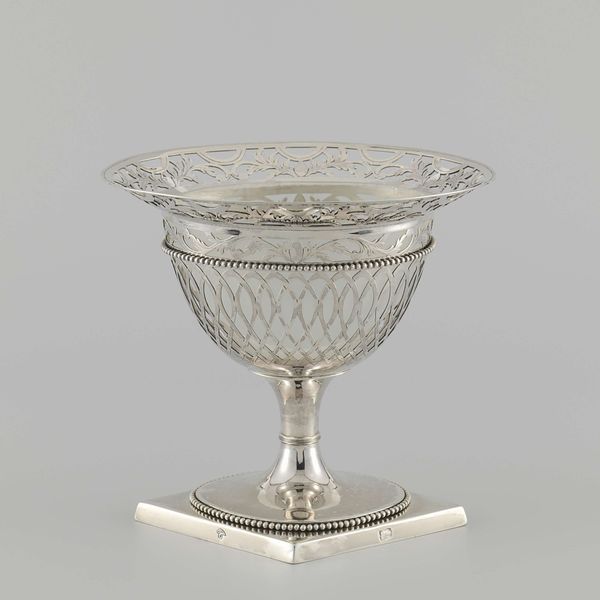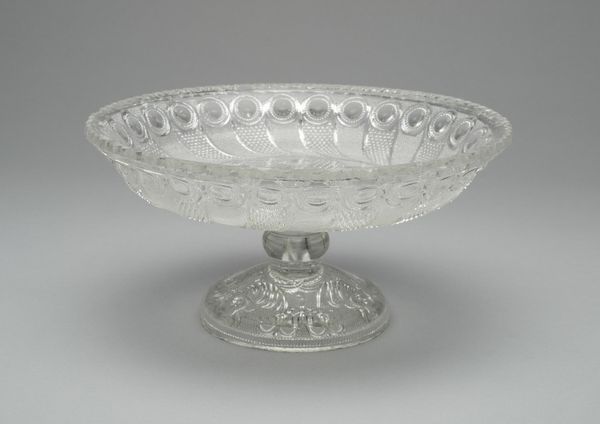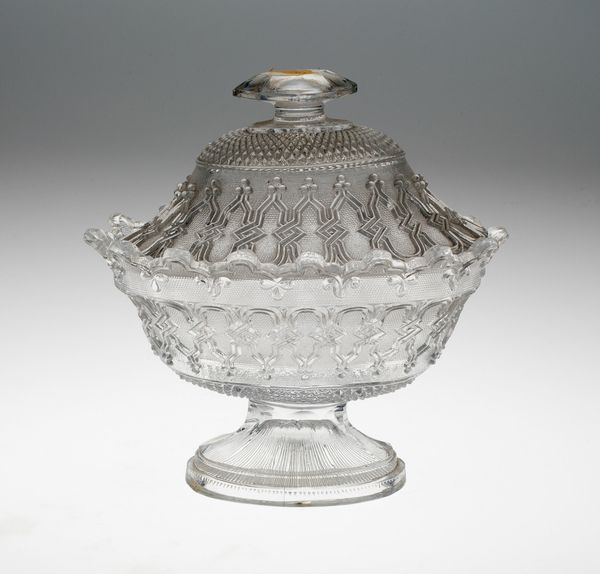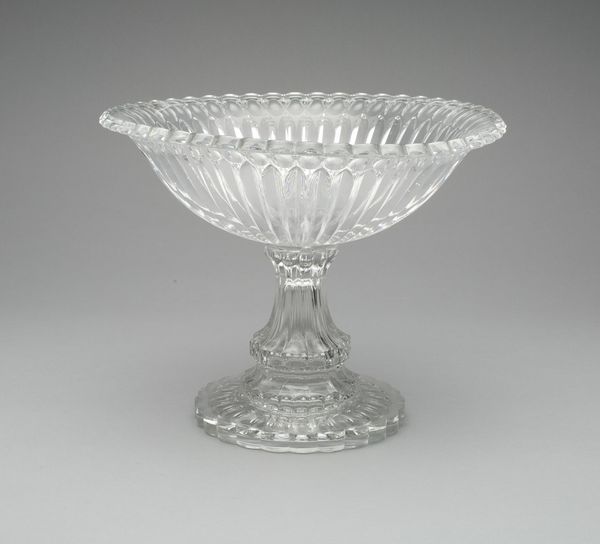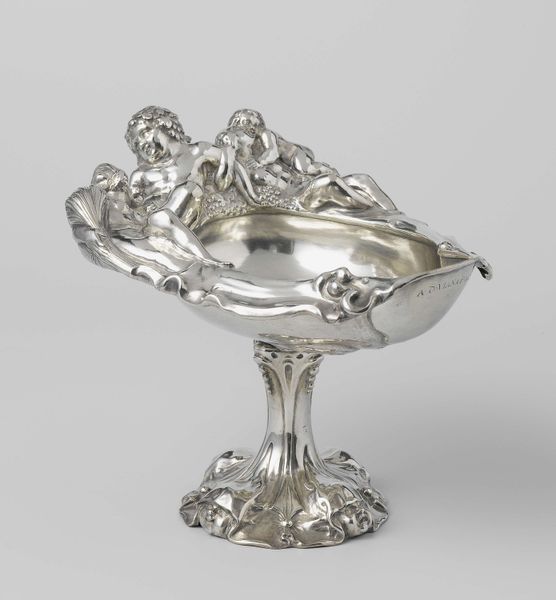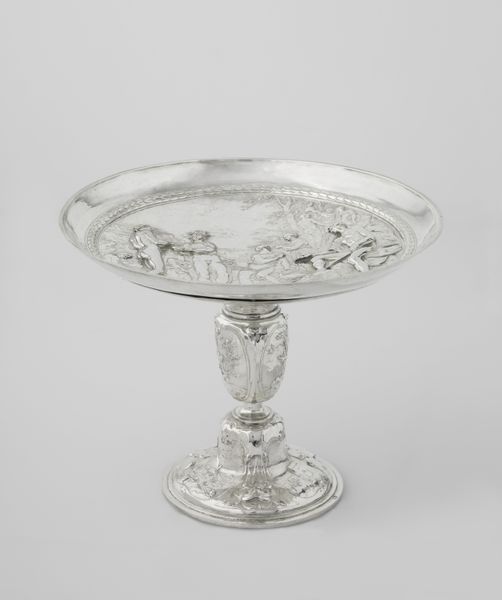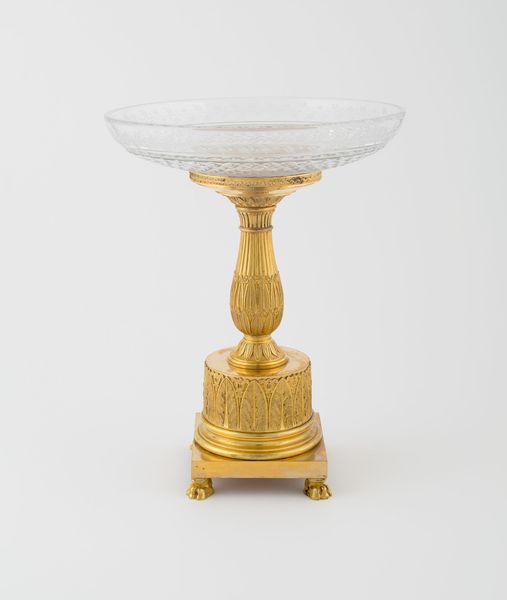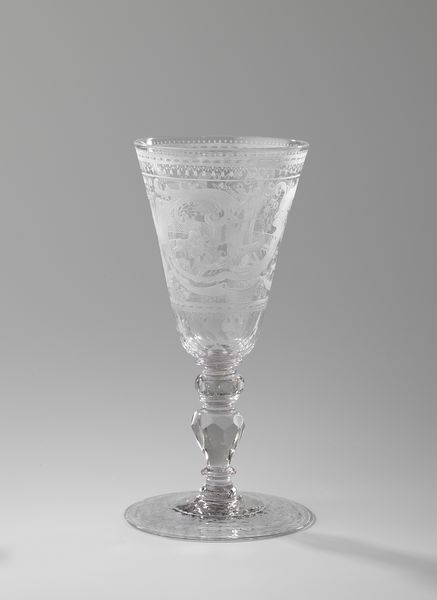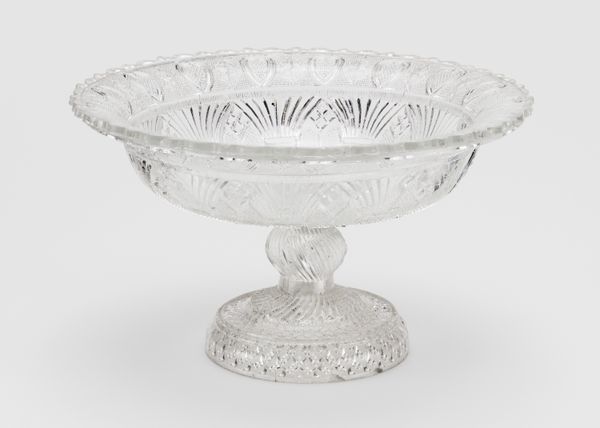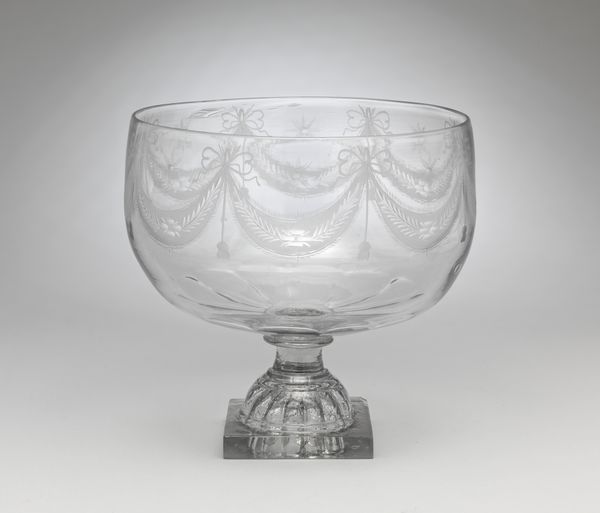
etching, glass, engraving
#
medieval
#
etching
#
11_renaissance
#
glass
#
engraving
Dimensions: height 12.5 cm, width 15.9 cm, depth 6.7 cm, width 6.9 cm, depth 5.9 cm
Copyright: Rijks Museum: Open Domain
Curator: Before us is a "Standing Dish," a work attributed to Hans Heinrich Rhabenhaupt, dating back to before 1607. What are your first impressions? Editor: Ethereal. It’s a remarkably delicate piece; the engraved imagery seems to float on the glass. I immediately think of the intense labor necessary to produce and engrave the glass, and I am curious about the artisans who helped produce it. Curator: Indeed. The composition strikes me as highly symbolic. Note the engraving: detailed floral and animal motifs. They present an intricate narrative around the circumference, almost a self-contained world. This reflects the Renaissance fascination with naturalism married to allegorical meaning. Editor: Agreed. But the question of labor is also pertinent. Blowing glass and engraving, these are not simply artisanal crafts; they involve very precise knowledge, a tradition of passing on expertise. These techniques were developed, often collectively, over time. The division of labor is clear, each artisan contributing unique expertise. Curator: Certainly. But consider the bowl’s formal properties – the symmetry, the carefully balanced proportions. This piece echoes classical forms, reimagined through the lens of the Northern Renaissance aesthetic. The contrast between the clarity of the glass and the precise engraving invites deep contemplation. Editor: True. It makes you wonder who made the golden parts too. As objects like this travelled through aristocratic networks, so, too, did the skilled laborers needed to repair or embellish them, like silversmiths and jewelers. What did their contribution look like? How did this travel contribute to developing global techniques of working glass and precious metals? Curator: Excellent point! It opens questions of reception too, a semiotic inquiry. The piece wasn't just an object; it communicated status and learning. What does it say about cultural values of the period? The symbolic meaning within such carefully etched detail… Editor: Precisely, the level of craft represents a display of both technological expertise *and* human ingenuity. The piece shows us how labor and consumption converge into a symbol of elite status in that time. I’d say the true essence lies not just in its visual delight, but in recognizing the people behind its construction. Curator: I agree. Considering its structural grace alongside the hands that shaped it only deepens our experience. Editor: Absolutely. Its beauty is compounded by a profound understanding of its means of production.
Comments
rijksmuseum about 2 years ago
⋮
The coat of arms belongs to Peter Wok von Rosenberg and Katharina von Ludanice, who married in 1580. A highranking Bohemian nobleman, Von Rosenberg was one of the courtiers and collectors who shared the emperor’s interests. Under Rosenberg’s patronage a workshop for carving vessels was established at his castle in Crumlau, where this Italian-looking dish was made.
Join the conversation
Join millions of artists and users on Artera today and experience the ultimate creative platform.

